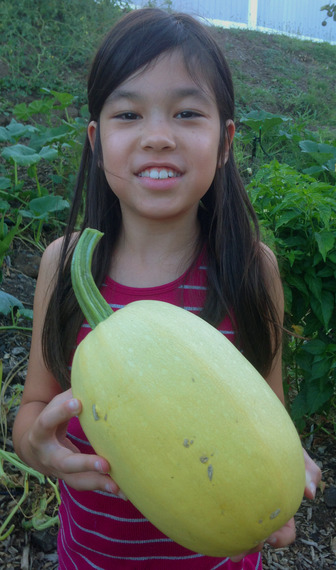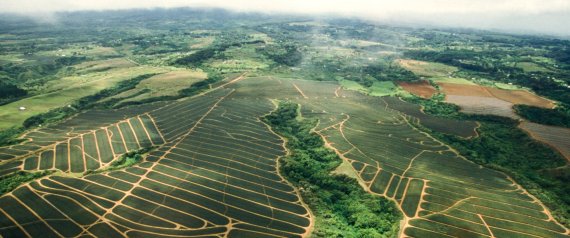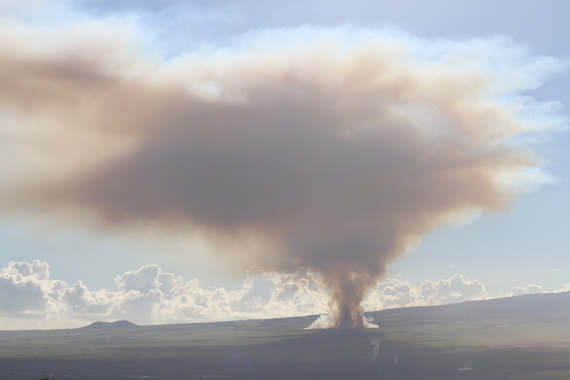Some very wealthy corporations are plastering Maui GMO with a very slick and expensive campaign of misinformation. Maui’s GMO moratorium voting initiative simply places a moratorium on new GMO crops until an Environmental Impact Statement can be done and evaluated. The ads, however, call it a “Farming Ban” and say it will block traditional agricultural practices.
I have thought about this a good bit. Human insertion of genes never happened until quite recently, unless I missed something. Crossing similar varieties of a species results in some marvelous hybrids, but those are genes of one species, not a jellyfish element in your cantaloupe. Certainly, the Polynesians brought many things to the islands before the Haole arrived, but genetic microbiology was not something they needed.
But then I thought about agriculture in Hawaii and I realized what the tradition is.
This is burning off of leaves in a Maui cane field in September 2014
Hawaii has, for nearly two centuries, been exploited by large agricultural concerns. By now, accepting ecological mismanagement for short-term economic gain is kind of an established part of island life. These companies, mostly growing sugar and pineapple, have paid the lowest possible wages and done maximum harm to the environment as they use the islands to grow their crops for export to other places, reaping maximum profits as they go. It is part of colonial practice that should have left Hawaii long ago, but it seems to be a tradition — we are in an abusive relationship with Big Ag, now represented by Monsanto, Mycogen, Dow, and Syngenta, but going back for generations.
Parts of every island now have areas of toxic soil and groundwater. It’s traditional to let agricultural companies trash our environment and thank them for the few jobs they provide! We can thank the Big 5 plantation families for overthrowing the constitutional monarchy of the Kingdom of Hawaii, too.
Strong-arm suppression of any threat to the big companies is also a tradition. As each immigrant group worked its way out of indentured servitude on the plantation, a new group was brought in, Chinese, Japanese, Korean, Filipino, Puerto Rican, and so on.Workers were subject to prison-like conditions and arrested if they fled. The Hanapepe Massacre of Filipino workers in 1924 showed how far the plantations would go to suppress dissent. When one group would try to get better wages, the sugar companies would incite violence between the different groups in a divide and conquer maneuver. They are still doing it now, bringing in dozens of employees to protest any attempt to restrict Big Ag practices, no matter how harmful.
I do realize the jobs are crucial to those families involved. But the effects of mono-cropping cane and pineapple are well-known to anyone who has a house on lands turned suburban after those agricultural practices have played out. The soil is compacted to a hard-pan about 24″ down with little organic soil above. Years of pesticides and herbicides from the past will haunt our futures for generations. DDT was used for many years in Hawaii, just to name one compound previously marketed as safe.
What are the real risks, and what are the alternatives?
The quintessential fact of GMO crops is that they are mostly modified to either be resistant to herbicides, or to contain a genetic insecticide, or both. The crazy part is that what is grown in Hawaii are primarily seed crops sprayed with both herbicidesand insecticides to make sure the seeds come out profitable, but we don’t really know. We would have more of a clue if Kauai County Council’s demand that companies publicly disclose the restricted chemicals they spray had not been struck down in court. Maui is only just becoming a site for seed production, which by the way, also says GMOs are not a tradition.
Hawaii has a lot of weeds and pests, yes. But is saving a few bucks worth major health risks? I do not want to eat or feed my family anything sprayed with either herbicides or pesticides. Atrazine and glyphosates are not condiments I serve. I personally crush a bug now and then, and I use a shovel to dig in organics to replenish the soils depleted by past bad agricultural practices when I can.
The alternatives to Big Ag are marvelous. At TEDxMaui last week, Dr. Sam Gon, science officer for the Nature Conservancy and kumu in the Hawaiian tradition pointed out that the islands maintained roughly the same population, pre-contact, in a totally sustainable way. Sunny Savage, a televised wild-foods enthusiast now living on Maui, pointed out that if we use a few freely growing plants in our yards for just a small percentage of our diet, we will be healthier and better nourished. Bottom line, you can see in the film Ingredients Hawaii that sustainably grown foods are far more nutritious and delicious.

While big corporations may be restricted in harvesting huge profits, smaller operations can flourish, and are already growing a wide variety of everyday crops, many sold at farmers’ markets around the state. Hawaii is also a superb place to grow exotic fruits, which have been a growing export for the state. All of these keep a bigger share of profits in the local economy, instead of going into shareholders’ pockets on the mainland or in other countries. It’s a no-brainer that Maui will do better without Big Ag mono-cropping.
“My last name’s Fitzpatrick and so I’m Irish,” say UHMC science instructor and County Council candidate John Fitzpatrick. “The vast majority of Irish came to America because of the potato famine, and the famine happened because they were growing only one type of potato. Had they been growing more types, the blight would not have caused famine.”
The biggest thing that makes my blood pressure go up is the number of outright lies in the very slick commercials funded by the Big Ag companies. GMOs may be safe, but I don’t want their chemically sprayed products anyway. No, they are not traditional, except in the sense that ravaging Hawaii for agricultural export has become a tradition.
But the biggest lie of all? The Maui bill is in no way a “ban on farming,” as the flashy commercials proclaim. It only places a moratorium on GMOs until an EIS can be run, and it affects no other farming practices at all. Monsanto and their ilk seem to think we are small-town rubes easily fooled by official sounding scary words. I, for one, am not hoodwinked by slick TV spots and mailers in my postal box. I am offended by their audacity to lie in such a brazen way.
Let’s get real. Who benefits in the short and long term? What do the people of Maui want, minus the obfuscation of frightening commercials, and yes, they are commercials and not public service announcements, if one considers that Citizens Against Maui County Farming Ban is led by Adolph Helm of the Mycogen operation on Molokai.
So if you think trashing our precious and limited island environment is a tradition worth saving, by all means, vote to block the GMO initiative. I’m sure the tons of chemicals sprayed on Maui will make it a healthier place for your children, right? Pigs may fly on airplanes in insurance company commercials, but traditional pigs stay on the ground, and traditional agriculture does not involve inserting bacillus thuringiensis into the genome of my family’s dinner or hosing it down with a wide variety of toxic chemicals.


